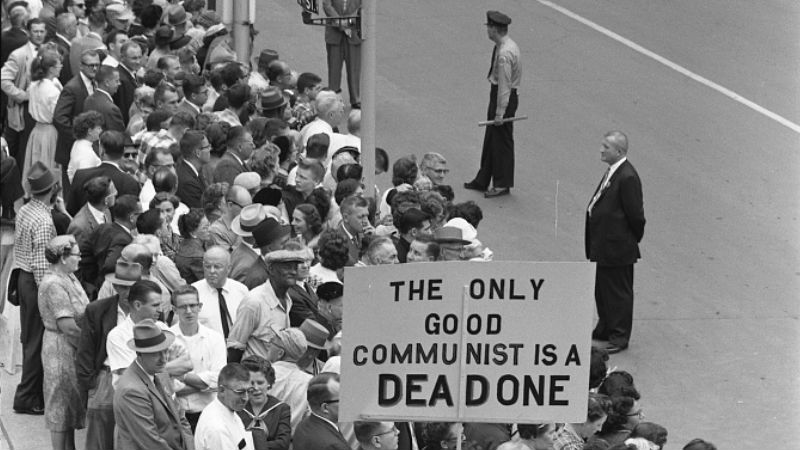
Exploring Unlikely Cold War Friendship
Jacob Hill, MALD 2019 Candidate, The Fletcher School
Thanks in part to a research award from Fletcher’s Russia and Eurasia Program, I am currently in the process of writing my capstone paper, which will focus on Nikita Khrushchev’s unlikely friendship with the Iowa corn farmer Roswell Garst. The remarkable relationship spanned sixteen years and culminated in Khrushchev’s 1959 trip to Iowa and the Garst family farm, the first time a Soviet premier had ever visited the United States. My paper will explore the ways that the friendship between Khrushchev and Garst eased tensions between the Soviet Union and the United States at the height of the Cold War, as well as its implications for diplomacy in general and Russia-United States relations specifically.
I first became aware of Khrushchev’s trip to Iowa while at Fletcher, in a reading on the Cold War for Professor Khan’s class The Historian’s Art and Current Affairs. I was immediately struck by the imagery: a Soviet leader plopped down in the sprawling cornfields of the American heartland; Communists in blocky suits alongside farmhands in overalls; sleepy Midwestern towns whose Main Streets were “crawling with spies.” I pictured KGB agents nursing mugs of coffee in the vinyl booths of rural Iowa diners, and knew I wanted to explore this wonderfully odd chapter of Cold War history in greater depth.
Further research led me to Roswell “Bob” Garst, an Iowa corn farmer and salesman who was partially responsible for Khrushchev’s decision to visit the United States. Garst first met Khrushchev in 1955 during a sales trip to the Soviet Union, and the two quickly discovered they had much in common. Both were plain-spoken and gregarious, and both had a deep admiration for the working man. The meeting was the start of a friendship that would last until Khrushchev’s death in 1971. As I read through their years of correspondence, I decided to expand the scope of my research from Khrushchev’s trip to Iowa to the entirety of his friendship with Garst.
Khrushchev and Garst are vivid personifications of the great ideological forces of the twentieth century—communism and capitalism. While Garst was fond of waxing idealistically about ending world hunger, he was, as one journalist noted, “primarily a man of commerce”; his trips to developing nations as an agricultural advisor were never complete without an order book in his pocket. Where Khrushchev sought to “abolish the cult of the individual,” Garst was American individualism incarnate. Distilled to the interpersonal level, the relationship and overlap between these seemingly opposing ideologies can be more easily examined, and perhaps better understood.
Despite their opposing worldviews, Khrushchev and Garst had a mutual respect for the other’s way of life. Garst defended collectivization and sympathized with the Russian people for the hardships they had endured in the first half of the twentieth century while the U.S. had prospered. He often prefaced his speeches to Soviet agricultural delegations with the assertion that “American agriculture is more advanced than the Soviet agriculture…not because Americans are smarter,” but “because of circumstances and circumstances alone.” Khrushchev was fascinated by Garst’s entrepreneurial spirit, and after spending the day at Garst’s farm in 1959, remarked memorably, “I have seen today how the slaves of capitalism live, and they live pretty well.”
The correspondence between Khrushchev and Garst provides unique insights into Russia-U.S. relations from 1955 to 1971, a critical period of Cold War history. Furthermore, it presents an American diplomat—one without any formal training or government affiliation—worthy of further examination and emulation in Roswell Garst. I hope to shed light on the various ways that Garst, a corn farmer from Iowa, was able to singlehandedly befriend Nikita Khrushchev and ease tensions with the Soviet Union at the height of the Cold War.
In my next post, I will talk about my research process and approach to structuring and writing the paper.
